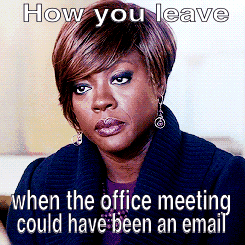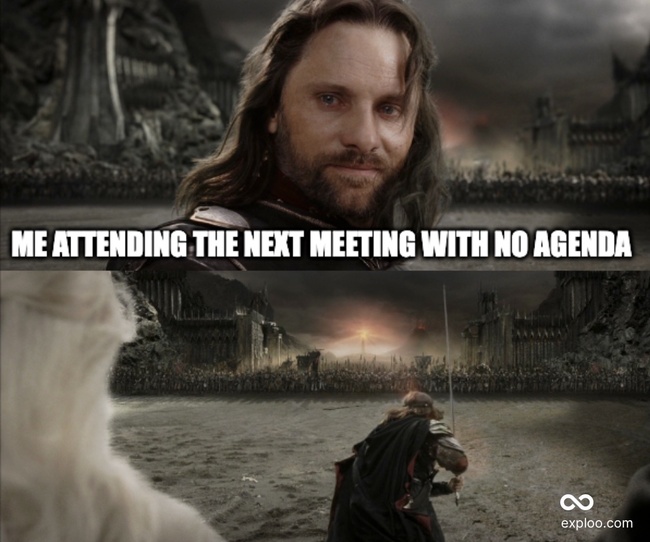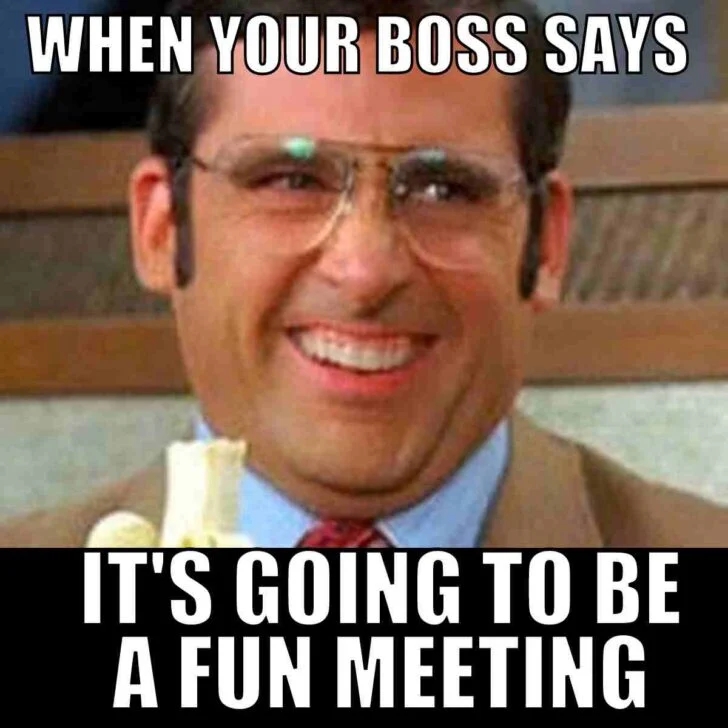6-minute read
In the past few months, I’ve run several team development days for board-level teams in different sectors. I’m emphasising the different sectors because all too often, I still come across the deep-rooted narrative of “public sector bad, private sector good”. Based on my experience, not just of the past few months, but of many years working across all sectors, leadership teams from different sectors have more in common than not. And one of the things they have the most in common is a frustration with meetings.
These frustrations tend to come down to:
- People being ill-prepared. This includes those coming as guests to present at a board meeting, as well as some board members, themselves.
- People not contributing during the meeting.
- Poor chairing, meaning the same people dominate each meeting and take up the most airtime.
- Poorly planned meetings. Using meetings to look at minutiae, such as information which could easily have been sent in an email.
- Poorly timed meetings. With items running over, leading to some items getting shoved off to another time, and meetings ending late. This creates a cumulative effect where meeting attendees are then late for their next meeting, if they have one.
That’s a lot of frustrated people and a lot of time wasted! A joint study between the London School of Economics, Columbia, and Harvard Universities examined how CEOs spend their time. One of the studies, which looked at 94 CEOs of top Italian firms and 357 corporate leaders in India, the researchers found that around 60% of CEOs’ working hours and 56% of corporate leaders’ working hours were spent in meetings. This matters in part because the CEO and the board or leadership team they head up are the most expensive people on the payroll. That is a lot of money being wasted on people being in meetings, especially if they are poorly run and don’t go anywhere. As Professor Steve Rogelberg says in his book, The surprising science of meetings,
“A poorly conducted and unnecessary meeting is indeed a form of time theft, a theft that can be prevented” (p.20).
Here are 10 things you can do:
A 2018 study looked at the findings from across 200 studies into meetings. The researchers identified the ideal way to make meetings more effective, suggesting 10 things to do before, during, and after a meeting.
BEFORE THE MEETING
1. Assess the needs of the meeting: First thing, ask if the meeting is truly needed. Meetings should involve problem solving, decision making, or substantive discussion. They should not be held to share routine or non-urgent information.

2. Circulate an agenda: Having an agenda makes the meeting priorities clear to all stakeholders and allows attendees to prepare beforehand. Make sure people have enough time to prepare in advance. For leadership team meetings, often with meaty items, the agenda and papes should go out the week before. You also need to ensure you’ve thought carefully about the order of items. A study published in the Journal of Social Behavior and Personality tracked the amount of time spent on various agenda items, with each agenda item differing in difficulty and importance. The researchers also manipulated the order of agenda items. They found that more important items did not always get more time. They also found that the items early in the agenda received a disproportionate amount of time and attention, often leaving little to no time for items toward the end of the agenda. The order of items matters! As Caroline Webb says, in her book How to have a good day,
“No wonder we find it harder to be creative toward the end of an interminable meeting; our deliberate system has spent all its energy on staying focused and polite for hours, leaving little in the tank for brilliant insight” (p.15).

3. Invite the right people: Leaders should ask what the goal of the meeting is and whose expertise can help the team get there. This also means don’t have too many people in a meeting. I’ve been in meetings where there have been 12, sometimes 16 or 20 people. No decision is going to get made in that size meeting. This is something researchers found in a 2011 study examining group dynamics. Looking at almost 100 teams, they found the larger the team, the poorer the behaviour, including interpersonal aggression and self-centred behaviour. The ideal optimum is 6-8 people in a meeting, particularly one where key decisions need to be made.
DURING THE MEETING
4. Remember that mood matters: How are you starting meetings? Do you just launch straight into the first item? Think carefully about how you start the meeting off. In one study, researchers used techniques to manipulate peoples’ moods. Participants were put into one of three groups – those in the good mood group, those in the bad mood group, and those in the neutral mood group. Those in the good mood group consistently outperformed the other groups when it came to creative problem-solving and being fully engaged in the discussion. One thing you can do is to ask each meeting attendee to share one thing they’re proud of, or happy about.

5. Encourage contribution: Findings suggest that high-performing leaders use meetings to set goals, facilitate group understanding of work problems, have challenging conversations, and explore issues and decisions from multiple perspectives. Ensure that its not just the loudest or most confident people dominating. One tactic I advise clients to use is time-blocking, where each team member gets a designated amount of time to speak in relation to an item. This also means people are more likely to prepare.
6. Redirect complaining: Attendees should be aware that complaining can quickly lead to feelings of futility and hopelessness, and leaders should quell complaining as quickly as they can. Complaining for the sake of complaining can be draining on a group. If someone complains, ask them to state what solution or alternative they would recommend.
7. Keep discussions focused: I’m a big fan of using tools to help us. One of my leadership clients now uses a timer for big items. This keeps everyone focused and when time’s up, they move on to the next item. Something you might consider is the use of stand-up meetings. A study in the Journal of Applied Psychology examined 100 five-person meetings. They found that the sit-down meetings took, on average, 34% longer than the stand-up meetings. Stand-up meetings tended to end earlier, with quality of meetings and decisions made as good as sit-down. Interestingly, another study from 2014 found that stand-up meetings stand-up meetings had better collaboration, less possessiveness of ideas, more willingness to consider others’ ideas, and greater levels of engagement.
You could also try the 50-minute meeting, something that the psychologist Daniel Levitin suggests in his book, The organized mind,
“Rather than scheduling meetings back-to-back, experts advise giving yourself ten minutes to write down what happened, to make notes about what needs to be done and other comments that will orient you when you next start work on it. And to give yourself 10 minutes before a meeting to review what is going to happen there” (p.320).
AFTER THE MEETING
8. Share minutes: Minutes should be sent as soon as possible, and ideally not later than 48 hours after a meeting, and not a few days before the next meeting! Sending meeting minutes serves as a record of the decisions that were made, a plan of action for next steps, and an outline of designated roles and responsibilities. This step also includes people who couldn’t attend the meeting but need the information.
9. Seek feedback: Feedback can inform the structure and content of future meetings. Leaders can then identify meeting problems to increase attendee satisfaction. Not only does feedback help inform the design and facilitation of future meetings, but we also know that how leaders behave sends a signal to the rest of the organisation as to what is and isn’t acceptable. By asking for and being open to feedback on how you run meetings, you’re role-modelling this as good practice for others. This has the potential to have a positive effect on your organisation’s culture, particularly if it is one that is meeting heavy.
10. Plan ahead: To build on progress made during the meeting, meeting leads should think about future actions, follow-through, and immediate and long-term outcomes of the meeting. A leadership team I recently worked with has created a forward plan of items which has helped with planning future meetings, moving things around if needed, and ensuring the right people are lined up well in advance.
REFERENCES
Aube, C., Rousseau, V., & Tremblay, S. (2011). Team size and quality of group experience The more the merrier? Group Dynamics: Theory, Research and Practice, 15, 357-375.
Bluedorn, A.C., Turban, D.B. & Love, M.S. (1999). The effects of stand-up and sit-down meeting formats on meeting outcomes. Journal of Applied Psychology, 84, 277-285.
Grawitch, M.J. et al. (2003). Promoting creativity in temporary problem-solving groups: The effects of positive mood and autonomy in problem definition on idea-generating performance. Group Dynamics: Theory, Research and Practice, 7, 200-213.
Knight, A.P. & Baer, M. (2014). Get up, stand up: The effects of non-sedentary workspace on information elaboration and group performance. Social Psychological and Personality Science, 5, 910-917
Littlepage, G.E., & Poole, J.R. (1993). Time allocation in decision making groups. Journal of Social Behavior and Personality, 8, 663-672.
Mroz, J.E., et al. (2018). Do we really need another meeting? The science of workplace meetings. Current Directions in Psychological Science, 27, 484-491.
Did you find this post helpful? I’d love to know, so Tweet me, or drop me a note on LinkedIn. If you have any colleagues that you feel should read this, too, please share it with them. I’d really appreciate it.
I also have a monthly newsletter which is a compilation of blog posts, helpful research, and reviews of books and podcasts – all aimed at helping managers and leaders become more confident in handling a range of workplace issues. You can subscribe here -> SUBSCRIBE
If you liked this post, you might also like these:
The psychological impact of meeting lateness [3 minute read]
How to prioritise effectively, get the right things done and become a better manager [3 minute read]


Love this! You and I were on the same page this month as this was my topic too. Your newsletters are always so packed full of evidence-based insight.
I had some fun with a decision tree on whether or not to attend.
all the best from across the the pond!
Liane

>
LikeLike
Thanks so much Liane. Ooh, how I love saying “no” to attending a meeting.
LikeLike